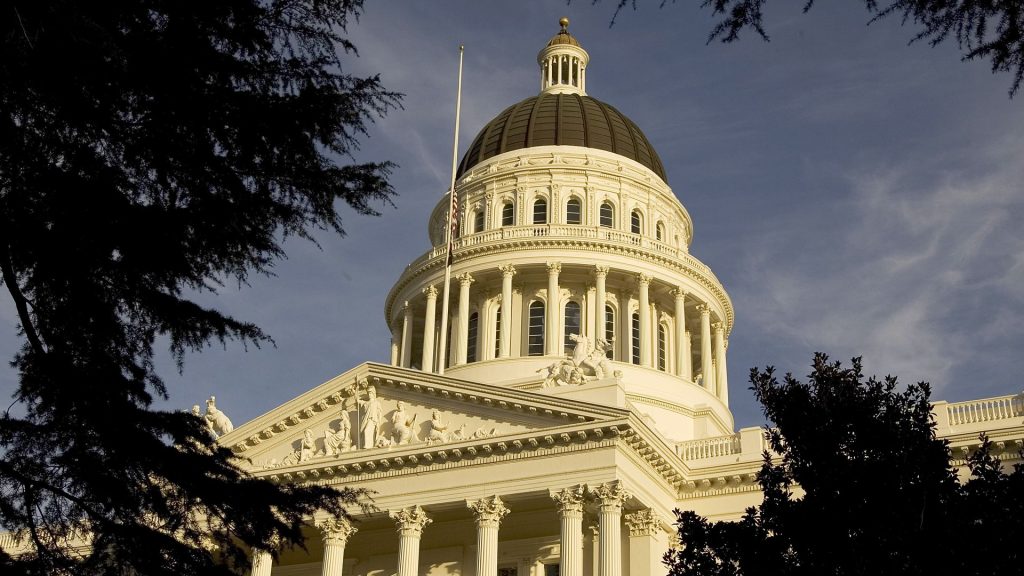Kamala Harris isn’t running for governor of California, so who is?

Former Vice President Kamala Harris announced she’s not going to run to replace term-limited Gov. Gavin Newsom next year in California. So what does that mean for the race and for the candidates who’ve already announced?
‘Jungle primary’
California uses a “jungle primary” system, meaning when the primary rolls around in June 2026, voters won’t be voting just based on party. Voters can pick any candidate from any party, and the top two vote-getters will move on to the general election.
“You’ve got to have some level of name recognition, some level of money or resources, and some ability to move the regular, habitual voter into that primary system because it rewards the top two, and that means the more Democrats that are in the race, they’re kind of shooting at each other,” David McCuan, professor of political science at Sonoma State University, told Straight Arrow News.
Democratic candidates
Harris led all the recent polls for next year’s race. A poll earlier this month from UCI-OC showed businessman Rick Caruso in second, followed by former Rep. Katie Porter.
So far, seven Democrats have announced their intention to run for governor.
“That group of seven prospective Democratic governors is very diverse and really reflects the diversity of California,” Darry Sragow, longtime California political strategist, told Straight Arrow News. “Three of them are women. One of them is African American. One of them is Asian American. One of them is a member of the LGBTQ community, and so you have, on the face of it, an incredible mix.”
An Emerson College poll earlier this year showed Porter second to Harris. Porter will have an advantage in name recognition after recently running for a Senate seat as well.
Porter’s biggest issue might be that she’s seen as too progressive and may not get the support of the national Democratic party.
“I think it would be fair to say that she kind of laid waste to the bridges behind her with the Democratic Party,” McCuan said. “She is a real progressive. She’s much more an unabashed progressive, but she’s always been seen as the party of one. In other words, she hasn’t worked well with others or played well with others, and that has hurt her on the inside.”
Name recognition is just one part of being successful in a campaign. McCuan described the key to success in a statewide race as having the acronym MORE.
M – Money
O – Organization
R – Resources
E – Endorsements
When it comes to money, Caruso will be at the top of that list along with Lt. Gov. Eleni Kounalakis.
“Her dad has more money than God, and he’ll throw it all at his little girl to help her win,” McCuan said.
McCuan is referring to Sacramento developer Angelo Tsakopoulos, who gave his daughter millions in her race for lieutenant governor in 2018.
Other names in this crowded Democratic field include former LA Mayor Antonio Villaraigosa, former Health and Human Services Secretary Xavier Becerra, former CA State Controller Betty Yee, former CA State Assembly Speaker Toni Atkins and more.
Then there’s billionaire businessman Rick Caruso, who recently lost the LA mayoral race to Karen Bass. There’s a chance Caruso could hold out on running for governor.
“The nice thing about the position Rick Caruso is in is he clearly has options,” Sragow said. “He can take a second shot at mayor of LA. He can run for governor. He can decide to stay on the sidelines and play king- or queen-maker.”
But one interesting element about Caruso –– is he a Democrat or a Republican?
“He’s a Republican in the morning and a Democrat at night, or vice versa,” McCuan said.
While the jungle primary may make party affiliation a little less important, California hasn’t elected a Republican to a statewide constitutional office in two decades. That Republican, bodybuilder and movie star, Arnold Schwarzenegger, won a recall election on a moderate platform.
“California is not just a blue state, it’s a deeply blue state, and most of the independent voters lean blue or light blue,” McCuan said. “They’re not red voters. And so, it’s still a hard place for a moderate Republican, or any Republican, to get elected statewide. It’s better conditions for them because they think Democrats are vulnerable on the issues of immigration and crime.”
Republican candidates
The top Republican in recent polls is Riverside County Sheriff Chad Bianco, a staunch Trump supporter. As a law enforcement leader, Bianco has focused his campaign on stopping crime.
“He’s so militant about it,” McCuan said. “It might help him in Riverside County, but it doesn’t help them in other population centers of the state.”
The other name on the GOP side that McCuan pointed to is another Trump ally and current special presidential envoy, Richard Grenell. Grenell has met with Trump but has not officially announced he’s joining the race just yet.
“It’s virtually impossible for a Republican to be elected statewide in California,” Sragow said. “There aren’t enough Republicans. They’re only about 25% of registration.”
Other election factors
The president has not shied away from getting involved in state politics, recently making his opinions known on New York City mayoral candidate Zohran Mamdani.
Trump is not a popular president in California, and any comments about candidates from him could sway voters. He could also play a role in any down-ballot elections and ballot measures.
“It’s still hard for Republicans to win statewide office, but he could be important in congressional races that may or may not flip the House,” McCuan said. “He could be important on those ballot measures in terms of turnout.”
Currently, there are two ballot measures scheduled for the election, with more expected.
While things like ballot measures, down-ballot elections and national politics could play into this race, Sragow believes the race will really come down to who is best for Californians.
“The question that candidates have to answer, and sometimes they lose sight of this, is, what are you going to do for the ordinary, working Californian,” Sragow said. “How are you going to make their lives better? How are you going to help them navigate these incredibly tumultuous times where we’re all trying to grapple with the consequences of and the impact on our lives of dramatically changing technology?”





